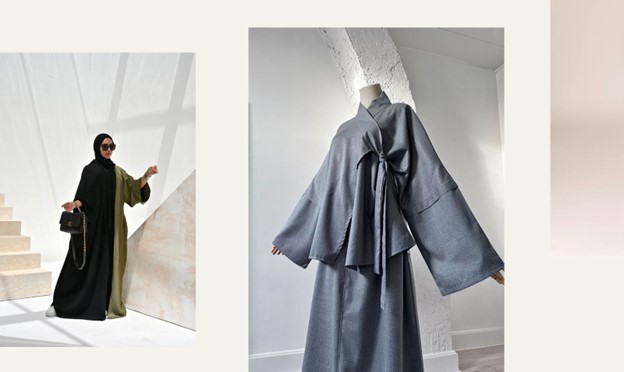I’ve been living in Japan for quite some time now, yet I had never considered wearing a kimono. It may sound odd, but it’s true.
Why? So far I can only imagine Japanese people wearing kimono since it is a part of Japanese history and tradition. Wearing one seemed like it would require a significant understanding and appreciation of the culture.
However, this changed during the Sakura season in my area. Inspired by the beautiful cherry blossoms, I decided to step out of my comfort zone and try wearing a kimono. It turned out to be a dreamy and romantic experience.

Afterward, I found myself reflecting on the history of the kimono and its significance.
so what is the history of Kimono ?
The word “kimono” translates to “wearing thing.” However, the item of clothing that has become synonymous with Japan wasn’t always known by that term. One of the clearest illustrations of how clothes bestows a sense of identity is its lengthy history.
The Heian period is when the kimono’s original ancestor was born (794-1192). Sewing straight fabric cuttings together produced clothing that fit a variety of body shapes. It was quite versatile and effortless to wear. It developed into the kosode, a unisex outer garment, by the Edo era (1603–1868). Smaller armholes were a defining characteristic of the kosode, which literally means “small sleeves.” The term “kimono” was only applied to the clothing starting in the Meiji era (1868–1912).
It’s amazing to see this final transition from the Edo period to modern Japan.
The ensuing 264 years were known as the Edo Period, or the Tokugawa Era. The final period of traditional Japan is thought to have been from 1603 to 1868. At this time, there was very little foreign impact on the development of Japanese culture. Furthermore, one of the essential components of what it meant to be Japanese was the kosode.
Kosode was a distinctly unifying cultural sign throughout the Edo period. It was worn by all Japanese people, regardless of their age, gender, or socioeconomic status. One obvious difference between Westerners and Japanese people, on the rare times that they interacted, was that the latter did not wear kosode. Thus, edo kosode provide an insight into a society right before a major shift.
So Kimono or (kosode ) became the key identifier for the Japanese person , and I wonder why I felt that I can not imagine Kimono on a non-Japanese person !!!

Interestingly, wearing the kimono made me think about the abaya, a traditional garment worn by women in my home country. Both the abaya and the kimono serve as cultural symbols, deeply embedded within their respective societies. The abaya, originating from the Arabian Peninsula, is usually made from lightweight fabrics that offer comfort and ease of movement. In contrast, the kimono is known for its varied colors, patterns, and fabrics, each with its own social significance.
Both outfits have a lot of skin coverage, yet they are very different in terms of cultural meaning, design, and symbolism. The abaya encourages modesty and has evolved to meet contemporary fashion standards without losing its basic qualities. On the other hand, the kimono is still a wearable piece of history and a lively representation of Japanese tradition and art. and that also captures the second point I noticed of the similarity between the Kimono and Abaya.
My awareness of how traditional clothing can represent cultural identity and legacy has been deepened as a result of this investigation into the kimono and abaya.
(担当:Aishah Satouf)
日本の伝統的な衣服「着物」と、アラビア半島発祥の伝統的な衣服「アバヤ」の類似点…
私はもうかなり長い間日本に住んでいますが、着物を着るなんて考えたこともありませんでした。奇妙に聞こえるかもしれませんが、本当です。
なぜならこれまでは、着物は日本の歴史と伝統の一部なので、日本人が着物を着ている姿を想像することしかできなかったからです。着物を着るには、文化に対する深い理解と認識が必要に思えました。
しかし、私の住んでいる地域で桜の季節になったとき、考えが変わりました。美しい桜に感銘を受けて、私はそのゾーンから抜け出して着物を着てみることにしました。それは夢のようなロマンチックな体験になりました。
その後、私は着物の歴史とその重要性について考えていました。 では、着物の歴史とは何でしょうか?
「着物」という言葉は「着るもの」と訳されます。しかし、日本の代名詞になっているこの衣服は、常にその言葉で知られていたわけではありません。衣服がいかにアイデンティティを与えるかを端的に示しているのが、その長い歴史です。
平安時代(794-1192)は、着物の原型が生まれた時代です 。まっすぐな布の切れ端を縫い合わせることで、さまざまな体型にフィットする衣服が作られました。非常に汎用性が高く、着やすいものでした。
江戸時代 (1603-1868) までに、男女兼用の上着である小袖へと発展しました。小袖の特徴は、袖丈が短いことです。文字通り「小さな袖」を意味します。「着物」という言葉が衣服に使われるようになったのは、明治時代 (1868-1912) になってからです。 江戸時代から近代日本への最後の変遷を目の当たりにすると、驚かされます。
その後の 264年間は江戸時代、または徳川時代として知られています。伝統的な日本の最後の時代は1603年から1868年と考えられています。この時期、日本文化の発展に対する外国の影響はほとんどありませんでした。
さらに、日本人であることの重要な構成要素の 1 つが小袖でした。小袖は江戸時代を通じて明確に統一された文化的シンボルでした。年齢、性別、社会的経済的地位に関係なく、すべての日本人が着ていました。西洋人と日本人が交流したまれな機会に、日本人と西洋人との明らかな違いの 1 つは、西洋人は小袖を着ないということです。
着物 (小袖) は日本人を識別するために重要なものになりましたが、なぜ私は外国人が着物を着ていることを想像できないと感じたのか疑問に思います。
興味深いことに、着物を着ることで、私は母国で女性が着る伝統的な衣服であるアバヤについて考えるようになりました。アバヤと着物の両方が、それぞれの社会に深く根ざした文化のシンボルとして機能しています。
アラビア半島発祥のアバヤは通常、着心地がよく動きやすい軽い生地で作られています。一方で、着物はさまざまな色や柄、生地で知られており、それぞれが独自の社会的意義を持っています。
どちらも肌を覆う部分が多い服ですが、文化的な意味、デザイン、象徴性という点では大きく異なります。アバヤは慎み深さを奨励し、その基本的な特質を失うことなく、現代のファッションの基準に合わせて進化してきました。その一方で、着物は今でも着ることができる歴史の一部であり、日本の伝統と芸術を生き生きと表現しています。これは、私が気づいた着物とアバヤの類似性の2つ目のポイントも捉えています。
着物とアバヤの調査の結果、伝統的な衣服が文化的アイデンティティと遺産をどのように表現できるかについての私の認識が深まりました。